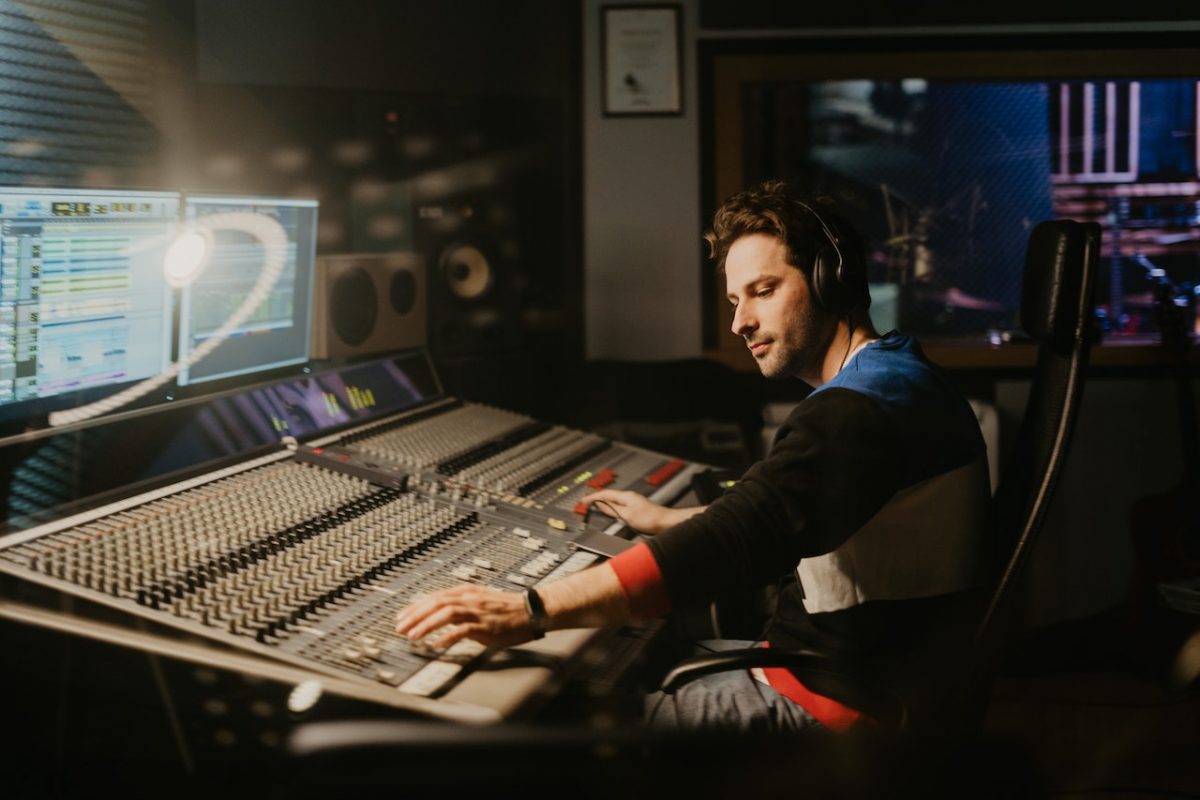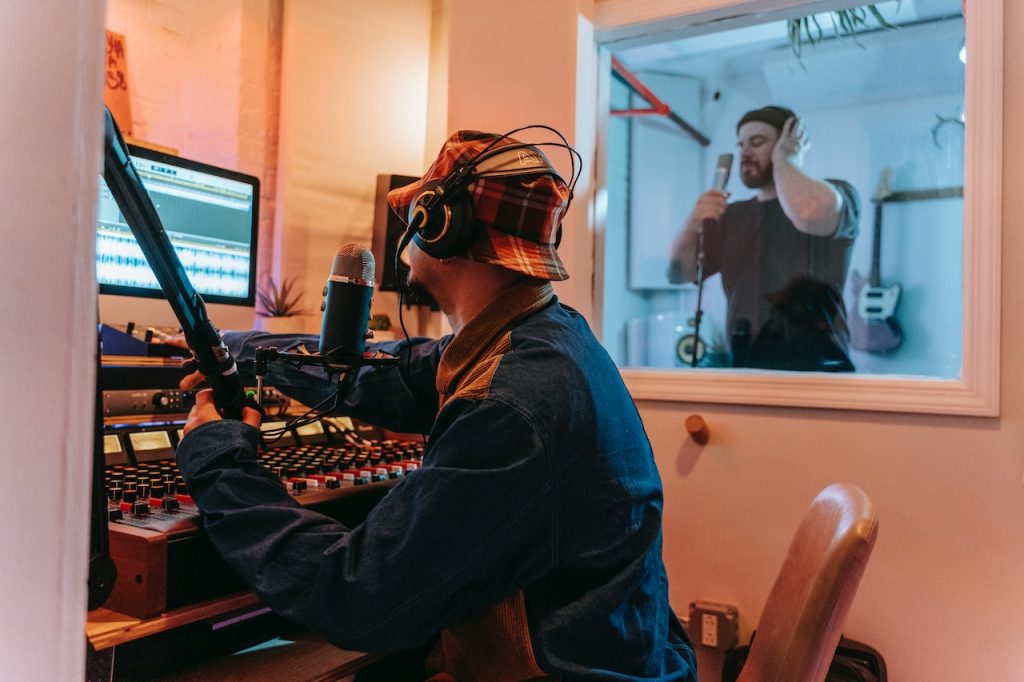If you’re looking to add an extra depth of sound to your recordings, you might want to consider using reverb, echo, or delay. But what is the difference between these three effects? And which one is best for your needs?
In this article, we will cover the differences between reverb, echo, and delay. We will also discuss their effects on sound. So if you’re interested or are just curious about reverb, echo, and delay, this post is for you!
What is the difference between reverb, echo, and delay? In a big room, scream “Hello!” The first sound to come from the walls is an echo. The echo becomes reverb when the sound bounces off a second, third, and fourth surface. Think of the delay as a single sound copied later.
What are delay, reverb, and echo?
Delay, reverb, and echo are all commonly used effects in music production and performance. However, they all have key differences.

Delay
The term “delay” refers to a process in audio processing in which an audio signal is recorded, duplicated, and then played again through a storage media such as a tape, pedal, or software plugin.
Suppose you own or have seen a delay pedal. In that case, you know that the pedal typically has two adjustable knobs: one for “time,” which controls how long the delay is between each repetition of the audio input, and another for “feedback,” which controls the number of repeats. Although there are more knobs on a delay pedal, these two parameters influence the quality of the delay that is applied to the signal.
Ping-pong delays, the Haas effect, slapback, doubling, multi-tap, echo, looping, etc., are only some of music’s most often utilized delay effects. In addition, delay-based effects include short and modulated delay periods, such as chorus, flanging, and reverb.
Reverb
Reverb occurs as sound waves move through the air, interact with various objects along their course, and finally arrive at our ears at slightly varied times. The impression of distance is facilitated by sound. Reverb may alternatively be seen as a series of delays of varying durations and feedbacks that “mix” together to provide the appearance of expansiveness and depth.
Echo
When sound waves hit a surface and are reflected by the listener, we hear an echo. Time elapses between when the sound is made and when it is heard again after bouncing off a reflecting surface. As a result, the sound will be heard more than once.
The echo phenomenon may be compared to bouncing a rubber ball on the floor. In this case, the “ball” is a wave of sound. It hits the surface and bounces back to you. It will continue to bounce until its momentum is exhausted. An echo eventually loses its sonic quality as well.
The greater the distance between the source and the reflective surface, the longer it takes for the reflected sound to reach the listener’s ears. A true echo is just a single echoed copy of the original sound, so it has limited utility. This is why multi-echo simulation is achieved using pedals and audio plugins in digital audio workstations.
AKAI Professional MPK Mini MK3

AKAI Professional MPK Mini MK3
The difference between reverb and echo
Echo and reverb are two types of sound effects that are almost identical, except for one thing: time. To put it simply, reverb and echo result from sound waves bouncing off surfaces in a room.
The more frequent term is “echo,” which describes hearing a reflected sound softer and later than the original. Legend says that if you yell into a canyon on television, you’ll eventually hear your voice echoing back to you from the distant past.
Reverb is like an echo, but the sound comes back in a fraction of a second and blends in perfectly with the rest of the sound. If I say something like, “I’d want to hear my echo,” and then use software to create an echo effect, I may hear myself repeat the complete line.
On the other hand, if I spoke the same phrase while using a reverb effect, you’d be able to hear the effect before I even finished the first syllable. This simulates the effect of listening to echoes in a room with solid walls.

The difference between delay and echo
To create a delay, many copies of the original signal are made and played back one after the other, each a fraction of a second after the last. Due to the long delay, it is easy to tell the difference between an echo and the original sound.
It’s important to note that an echo is a special case of delay. The delay is often set up in the signal chain before the echo to provide a more textured sound. However, this might result in a messy sound when the track is mixed.
When should you use reverb?
Reverb can be used in audio when you want to create a sense of space or simulate the sound of a particular environment. It can help to enhance a mix that sounds muddy or too dry.
For example, if you are recording a solo acoustic guitar in a dry studio, adding some reverb can simulate the sound of the guitar being played in a larger room or concert hall. It can add depth and dimension to the sound, creating a sense of space and enhancing the overall sound quality.
…it is important to use reverb in moderation, as too much reverb can make a mix sound unnatural or overly processed.
Reverb can also be used creatively in audio production to add unique effects to a track. For instance, a reverse reverb effect can create a dreamy and otherworldly sound by reversing the reverb tail and placing it at the beginning of a sound. Additionally, gated reverb can create a rhythmic effect by cutting off the reverb abruptly, creating a percussive sound.
However, it is important to use reverb in moderation, as too much reverb can make a mix sound unnatural or overly processed. It is recommended to experiment with different reverb settings and find the right balance to achieve the desired effect.
When should you use delay?
Delay is a powerful audio effect that can enhance the depth and space of a mix. Here are some scenarios in which you might want to use delay in your audio production:
- Adding thickness to a sound: When you want to thicken a sound, instead of reaching for a chorus or doubler plugin, consider using a tape delay effect. It can create a more natural and warm thickening effect that can add depth to your mix.
- Creating a sense of space: Delay can help create a sense of space in your mix by adding reflections and echoes. By delaying a sound, you can make it seem like it’s coming from a larger or more distant space, which can add depth and dimension to your mix.
- Avoiding muddiness caused by reverb: Applying reverb to every track in a mix is a common mistake that can make your mix sound muddy and fatiguing to listen to. In such cases, using delay instead of reverb can help create a sense of space while preserving clarity and detail in the mix. Delay can also be useful for adding depth and space to a single instrument without muddying the mix.
When should you use echo?
Echo is a popular effect used to create the illusion of space and depth in a recording. Here are some scenarios in which you might want to use echo:
- Creating a live performance atmosphere: If you are recording a live performance, adding an echo can help recreate the sound of a concert hall or stadium. The effect can make the recording sound more immersive and dynamic.
- Enhancing vocals: Echo can be used to enhance the presence and clarity of vocals in a recording. By adding a subtle echo effect to a vocal track, you can create a sense of space and depth around the vocals, making them stand out in the mix.
- Adding a creative effect: Echo can be used as a creative effect in a recording, adding texture and interest to a track. For example, you could use a long, delayed echo to create a haunting, ethereal sound on a guitar solo.
If you want even more tips and insights, watch the video “Reverb VS Delay or Echo – What Is The Difference? Explanation, Comparison, and Demonstration” from the Mykola MrHardGuitar – Guitar Reviews And Lessons YouTube channel.
Frequently asked questions (FAQ)
Do you still have questions about the differences between reverb, echo, and delay? Below are some of the most commonly asked questions.
Should you use delay and reverb?
Whether to use delay and reverb in your music production depends on the specific musical context and the artistic vision you have for your music. In general, it’s important to use these effects sparingly and with intention. Overusing them can make your mix sound muddy or cluttered.
Which is better for vocals, reverb or delay?
This depends on the desired effect and the specific mix. Reverb is generally more commonly used, but delay can be a great alternative for creating a unique and interesting sound. You can experiment with both effects and use them in moderation to achieve the desired result
Which goes first, reverb or delay?
The delay unit is usually positioned in a guitar signal chain before the reverb pedal, but the artist decides. Most guitarists prefer applying reverb after a delay to avoid muddying the tone.
When should I use delay in audio?
Like reverb, the delay may push a track back in the mix to create depth. Using a stereo delay on a mono signal or panning the delay to the other side of the mix may make the music appear broader. In addition, the delay may give your track rhythmic energy.
Why do musicians use reverb?
Reverb adds depth and tells the listener where the sound is and how far away they are from it. Reverb transports listeners to a music hall, cave, cathedral, or private room.
Conclusion
Well, folks, we’ve reached the end. I hope you now have clarity on the differences between reverb, echo, and delay. Each has unique benefits that can make your tracks sound more realistic or help create a certain atmosphere. It is your choice as to which one you want to use in your next track. Remember that using too many can cause the entire song to sound muddy and unfocused.
So, how do you use reverb, echo, and delay effects? And did I cover everything you wanted to know? Let me know in the comments section below (I read and reply to every comment). If you found this article helpful, share it with a friend, and check out my full blog for more tips and tricks on music production. Thanks for reading, and never stop making music.
Key takeaways
This article covered the differences between delay, reverb, and echo. Here are some key takeaways:
- Delay, reverb, and echo are all commonly used effects in music production and performance.
- A delay occurs when an audio signal is recorded, duplicated, and then played again through a storage media.
- Reverb occurs as sound waves move through the air, interact with various objects along their course, and finally arrive at our ears at slightly varied times.
- An echo occurs when sound is made and heard again after bouncing off a reflecting surface.
- Reverb can be used in audio when you want to create a sense of space or simulate the sound of a particular environment.
- Delay can enhance the depth and space of a mix.
- Echo creates the illusion of space and depth in a recording.















